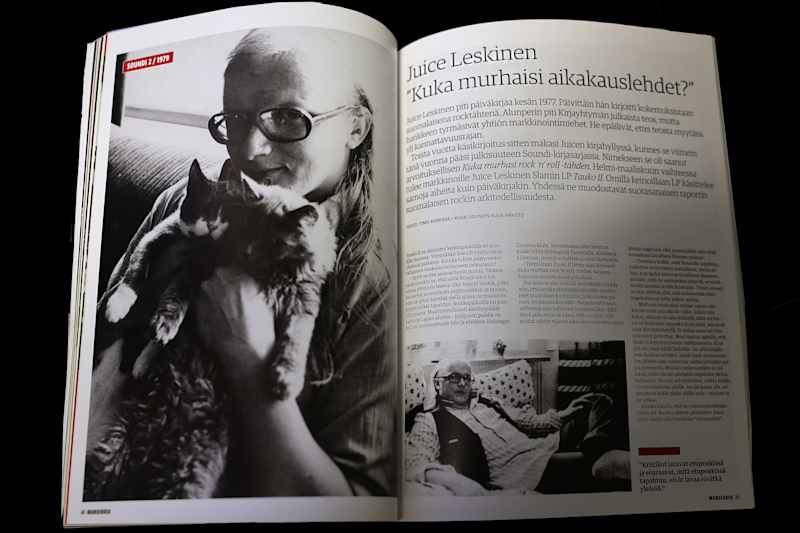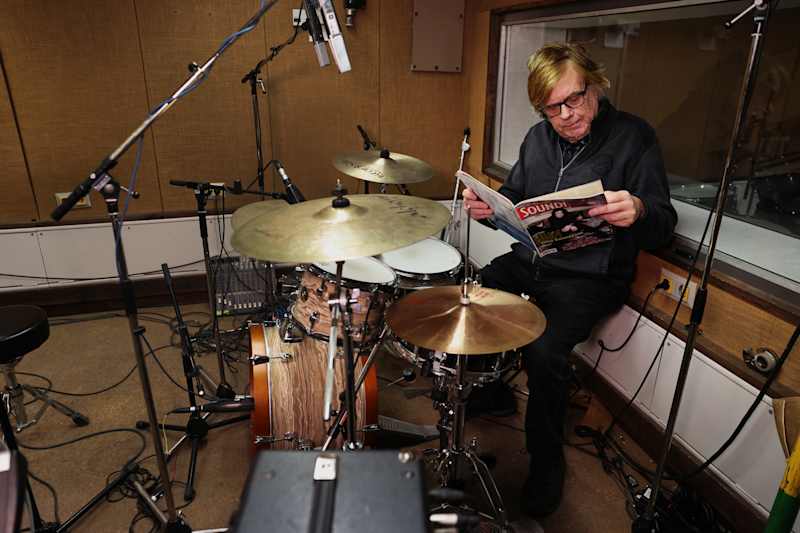Legendary music magazine Soundi turns 50 – first edition saved by the contents of Juice Leskinen’s plastic bag

The Finnish rock scene developed through the collaboration of music makers, sellers and journalists. In the early days of Sound, the same artists were seen on the cover of the magazine and in the mailing lists.
In December 1974, a prediction was made in Pirkkala that went completely wrong.
Musa’s career was ultimately cut short, but Soundi magazine, founded in Tampere in January 1975, is still going strong.
Timo Kanerva is the magazine’s longest serving editor-in-chief. He had time to pilot the magazine for almost four decades before retiring in 2013.
Sound can with good reason be said to have contributed to the development of the entire domestic rock culture.
Rockers on stickers
The founding team of Sound, in their twenties and thirties, believed in their cause unwaveringly from the beginning. Enthusiasm was enough, initial financial capital was less.
The first edition of the magazine was almost left at Valkeakoski’s printing house, when the agreed advertising money did not arrive in time.
A savior was found nearby.

Soundi found its readers right away. Orders started coming in at such a pace that help was also needed in practical work.
The same names were found in the talk group as on the cover of the magazine.
From the beginning, the main idea was to write about all kinds of Finnish rock music. The diversification of the domestic tableware also caused friction in the delivery.
For example, making the first single of Hanoi Rocks a headline in 1980 was not to everyone’s liking.
– Waldemar Wallenius was really hot to me that such a big deal was being made out of a band of geeks like that. But if the band and Musa worked, then the plan was to tear it up big right away.
Timo Kanerva became Sound’s editor-in-chief when the magazine was about six months old.
After a promising start, more difficult times lay ahead. In the early years of the 1980s, the paper persevered mainly with the proceeds of the Soundi books devised by Kanerva.
The middle of the decade was a turning point.
– In the 70s, Finnish rock was still such a mess, but suddenly it really rose to number one. Eighty-five was our first really good year, and that’s when the good times began.
In 2012, Timo Kanerva was awarded the State Journalism Award.
In the basics, the pioneer of music journalism was praised for being one of those who have been creating the foundation for domestic rock culture.
Collaboration was required to create the foundation, says Kanerva. Finnish rock needed Finnish rock media, and the same the other way around.
“Children’s music” became an export product
From now on, it is almost impossible to understand how rock music was once dismissed as \”children’s music\ says Kanerva.
Now, in his opinion, attitudes have changed perhaps a little too much.
– Maybe it has already gone to the other side. Culture pages are a little too interested in what sells well. Instead, one could be interested in what is new, creative, functional and good music.

In the best years, Soundi employed six people in addition to the editor-in-chief. The delivery facilities at Keskustor were cool.
– Such a local, Kanerva describes.
Those days have come a long way. Since 2013, Sound has been published by Pop Media, which has fallen into the background due to its remuneration policy, and only the editor-in-chief works for the magazine.
Timo Kanerva does not want to comment on the magazine’s current situation at all.
He retired from Sound after 38 years and, by his own calculations, between 40,000 and 50,000 pages delivered.
If he still had a magazine, the rock man would drop rock from the headline.
– At the moment, I think the most interesting thing is that there are so many genres. There are folk influences and excellent jazz and so on. In my opinion, today the magazine should be a music magazine and not a rock magazine.
